City guides


Washington DC Travel Guide
The political and patriotic heart of the US, Washington DC is packed full of monuments and museums, with enough grandeur and history to impress any traveller. As befits the political powerhouse of the nation, and perhaps even of the world, Washington DC draws thousands of tourists every day who come to see the iconic sights, visit the superb, usually free museums and generally have a wonderful time. While weighty political matters are being debated behind some of the beautiful facades, visitors can enjoy the green parks, top-notch restaurants, energetic nightlife, quality shopping, and buzzing bars.
Anyone who is inclined to see where world-changing decisions are made should travel to Washington DC, where a wealth of historic sightseeing attractions awaits.
Best time to visit Washington DC
The best time to travel to Washington DC is during the seasons of spring and autumn (April, May, September and October), although the hot, humid summers (June to August) remain high season for tourists. Winter (between December and February) can get uncomfortably cold with temperatures usually hovering just above the freezing mark.
What to see in Washington DC
-Stand in Ford's Theatre, envisioning the assassination of the beloved President Abraham Lincoln.
-Watch a performance at Kennedy Center, the busiest performing arts centre in the US.
-Admire the impressive collection in the National Gallery of Art.
-Trawl the many fascinating museums of the Smithsonian Institution.
What to do in Washington DC
-Play at espionage at the International Spy Museum.
-Visit the Giant Pandas and many other exotic animals in the National Zoo.
-Take a tour of the White House and imagine life as a US president.
-Climb to the top of Washington Monument and enjoy the view.
Beyond Washington DC
Washington DC is bordered by Virginia and Maryland, with many exciting attractions nearby. Popular excursions from the city include Mount Vernon, the former plantation home of George Washington; the Arlington National Cemetery, just outside the city; and Old Town Alexandria, in Virginia.
Getting there
International flights land at Washington DC's two major airports, Baltimore-Washington International and Washington-Dulles International.
Did you know?
-There is approximately one lawyer for every 19 residents in the city.
-A rock from the moon is on display at the National Air and Space Museum.
-More wine is consumed per person in Washington DC than any other state in the US.
Things to do in Washington DC
The bustling and exciting city of Washington DC contains a multitude of must-see attractions, including the iconic statues, buildings and museums that have become synonymous with the capital and have made regular appearances in TV shows and movies.
The National Mall, lined with important landmarks, museums, and monuments, is the best place to start. Iconic attractions along this stately stretch include the Washington Monument, the White House, the Capitol Building and the Lincoln Memorial, all musts for history and politics buffs.
Another world-renowned site in this area is the US Holocaust Memorial Museum, a thought provoking and hugely worthwhile exhibition. Culture lovers will enjoy the National Gallery of Art and kids of all ages will love the International Spy Museum. Another popular attraction on any tour of Washington DC is a drive along Embassy Row.
On sunny days, the National Zoo is a great kids activity in Washington DC, with rare giant pandas making a visit particularly memorable. The city's many parks and gardens are also great for running off excess energy and enjoying the beautiful weather in spring and autumn. Children will love the cotton-candy pink Cherry Blossom trees in the Tidal Basin each April.
Visitors intent on lots of sightseeing should purchase the Washington DC Explorer Pass, which entitles the bearer to admission to many of the top Washington DC attractions at reduced rates. However, many of the best things to see in Washington DC, including the Smithsonian Museums, the National Archives and Ford's Theatre are free to the public, making sightseeing in Washington DC a very affordable activity.
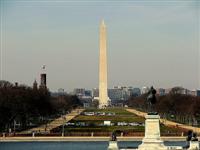
National Mall
Extending for more than two miles (3km), from the US Capitol to the Potomac River, the tree-lined grassy strip known as the National Mall is the central hub for tourists in Washington DC. It's home to the tapering Washington Monument; the Lincoln, Roosevelt and Jefferson Memorials; the Capitol Building; the White House; the museums of the Smithsonian Institution; and the National Gallery of Art. The Mall is at the heart of the city's social life, it being a site for many celebrations and festivals, as well as joggers, picnickers, food vendors and strollers. The Tidal Basin, a beautiful lake famous for the blossoming Japanese cherry trees in spring, lies to the south.
US Capitol
Sitting atop Capitol Hill with its giant white dome visible from all over the city, the Capitol Building is probably the most prominent landmark in Washington DC. The heart of the US government, it contains the Senate, the House of Representatives, the Supreme Court and the Library of Congress. Statues of important historical figures fill its halls while paintings and frescoes decorate the rotunda, depicting 400 years of American history. The enormous circular space capped by the 180-foot (55m) high dome is the hub of the Capitol, with a symbolic fresco masterpiece at its centre.
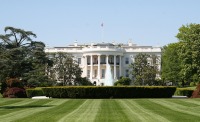
White House
The residence and headquarters of the President of the United States since 1800, the White House sits at the edge of the National Mall. The palatial building has undergone numerous alterations under each incumbent, such as the exercise pool for Roosevelt's polio affliction, Jacqueline Kennedy's famous Rose Garden and the glitzy additions of a hot tub and humidor for Clinton. Tours visit several rooms on the Ground and State Floors, including the Oval Office, the State Dining Room and the East Room, the publicised scene of presidential receptions and other social events. American citizens can book these tours through their Member of Congress and foreigners must book through their embassy in Washington DC.
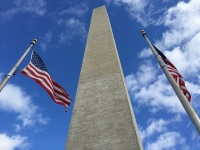
Washington Monument
In recognition of his leadership in the fight for American independence, the Washington Monument was built to commemorate the first president of the United States, George Washington. The tallest structure in the city, the gleaming white obelisk offers 360-degree views of some of the most famous sights in the world, including the White House, the Capitol Building and the Lincoln Memorial. The monument, a 555-foot (169m) marble spire, stood uncompleted for 37 years and a change in the colour of stone halfway up marks the two building phases. Climbing its steps is prohibited but a free elevator conveys visitors to the gallery that provides unparalleled views of Washington DC and across the Potomac River.
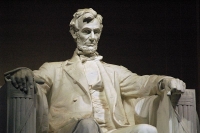
Lincoln Memorial
The grandiose Lincoln Memorial is a tribute to the 16th US president, who preserved the Union during the Civil War and ended slavery. In the centre of this temple is a huge marble statue of Abraham Lincoln, staring out over the Reflecting Pools towards the Washington Monument and Capitol Hill. Carved in the walls of the memorial chamber around the statue are inscriptions of two of his most famous speeches, the Gettysburg Address and his Second Inaugural Address. The memorial is the site of numerous demonstrations committed to justice, most notably the Civil Rights March in 1963 when Martin Luther King delivered his classic speech.
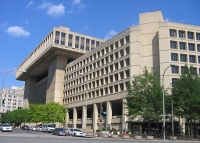
Federal Bureau of Investigation
The FBI Experience, a self-guided tour, is open to the public and explores the Bureau's past and present. The tour takes visitors through crime laboratories and past displays of thousands of confiscated weapons and illegal items seized during narcotics operations. There are exhibits on crime fighting techniques and counterintelligence operations, as well as terrorism, agent training and famous cases. Due to security reasons, the tours are only available to US citizens and tours must be booked at least four weeks in advance with FBI clearance needed to enter the building. Those in search of espionage history should rather go to the nearby International Spy Museum.
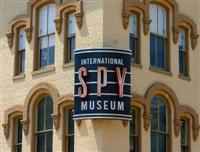
International Spy Museum
The International Spy Museum features the largest collection of publicly displayed international espionage artefacts in the world. It is the result of years of planning and advice by former officials of the CIA, FBI and KGB. Interactive exhibits cover the history of spying and espionage techniques during the 20th and 21st centuries. There is also a section dealing with high-tech gadgets such as bugs and tiny cameras, with interactive stations exploring disguises, code breaking and threat analysis. There are several interactive exhibits such as safe and code-cracking, escape rooms and polygraph tests, experiences which are combined with special effects and live action. The museum complex includes a restaurant, spy-theme cafe and shop.
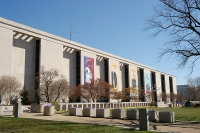
Smithsonian Institution
Nicknamed the nation's attic, the Smithsonian Institution is one of the world's finest research centres, with 17 of its museums and a zoo located in Washington DC. The museums contain collections of historical importance on almost every subject. They include the National Air and Space Museum, packed with full-size space and aircraft, including the Wright brothers' plane; the Natural History Museum, with the Hope Diamond and the world's largest stuffed blue whale; and the American History Museum, displaying the original Kermit the Frog. Others include the Freer and Sackler Galleries of Asian Art, the African Art Museum, the National Museum of the American Indian, the Arts and Industries Building, the Hirshhorn Museum and Sculpture Garden and the National Portrait Gallery. The Smithsonian Museums are a fantastic attraction for families in Washington DC, and a wallet-friendly one as admission is free.
National Gallery of Art
Two buildings, the West and East Wings, make up the visually stunning National Gallery of Art that is the most popular art museum in North America. Together they house one of the world's leading collections of Western paintings, prints, photographs, graphics, and sculptures from the Middle Ages to the 21th century. Walking from the West Wing to the East provides a near chronological display of European art. The West Wing, the original building, is a marble architectural work of art with a domed rotunda over a fountain, housing most of the permanent collection. The one hundred or so collection galleries display modern and contemporary art with masterpieces by famous artists arranged by nationality, including what is considered to be the finest Renaissance collection outside of Italy, as well as an outstanding Impressionist collection. The gallery's newer addition is the ultramodern East Wing, composed of two glass-walled triangles, and is devoted to 20th-century paintings and sculptures. The National Gallery of Art Sculpture Garden is a large park outside the museum, which features a huge central fountain with some of the museum's permanent collection of sculptures on display.
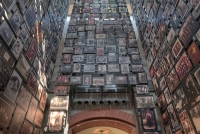
US Holocaust Memorial Museum
The United States Memorial Museum is a memorial to the millions of Jews murdered by the Nazis between 1933 and 1945. There are three floors, starting with the occupation of Poland, then the Holocaust and finally the after effects of the war and liberation of the camps. While the exhibits convey the scale of the genocide through voice recordings, personal belongings of victims and Nazi propaganda, the Hall of Remembrance remains a quiet place of reflection, filled with dozens of burning candles lit in memory of the victims. The permanent exhibition's graphic content can be disturbing and is not recommended for children under 11 years of age.
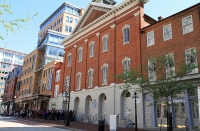
Ford’s Theatre
On April 14th, 1865, President Abraham Lincoln was assassinated while watching a performance at Ford's Theatre in Washington DC. He was shot by an actor named John Wilkes Booth who sympathised with the Confederates in the ongoing Civil War. Today, Ford's Theatre is both an active performance venue and historical site, with the Ford's Theatre Museum containing artefacts related to the assassination, including the Derringer pistol Booth used. Across from the theatre is the Petersen House, which is where President Lincoln finally died early the next morning. Tours are limited to groups of 20 people at a time so should be booked in advance to avoid disappointment.
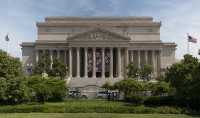
National Archives
While looking at historical papers may sound dull compared to some of Washington DC's more light-hearted museums, the National Archives is one of the most popular attractions in the city, housing priceless documents from US history, including the Declaration of Independence, the Bill of Rights, the Constitution, the Emancipation Proclamation and even the 1297 version of the Magna Carta. All these documents are displayed to the public in the Rotunda for the Charters of Freedom, along with other collections of photography and historical memorabilia. Apart from the historic documents, the impressive building itself makes a visit to the National Archives worthwhile.
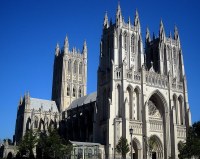
Washington National Cathedral
One of the largest cathedrals in the US, the Washington National Cathedral, also known as the Cathedral Church of Saint Peter and Saint Paul, is a magnificent Gothic Revival structure standing 301 feet (91m) tall. The interior is just as grand, with the long, narrow sanctuary framed by buttresses, chancels, transepts and beautiful stained-glass windows. The most famous of these is the Space Window, which contains a piece of moon rock brought back by Neil Armstrong from the Apollo 11 mission. The cathedral is the final resting place of noted figures such as Helen Keller, President Woodrow Wilson and Admiral George Dewey.
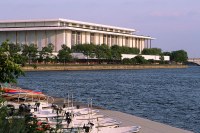
Kennedy Center
One of the most prestigious performing arts centres in the US, the John F. Kennedy Center for the Performing Arts is also its busiest, hosting roughly 2,000 performances each year for an audience totalling nearly two million people in its eight separate performance halls. It is home to the National Symphony Orchestra, and has commissioned hundreds of new works in various disciplines, including theatre, dance and jazz and folk music. Each year five artists or groups are awarded the Kennedy Center Honors for lifetime contribution to American culture and the performing arts in a gala ceremony televised nationally. There are a number of interesting tour options for those who don't have the time or money to take in a performance.

National Zoo
The Smithsonian National Zoological Park, commonly known as the National Zoo, is a wonderful attraction for families on holiday in Washington DC. As part of the Smithsonian Institution, the zoo has no entry fee and offers visitors the chance to explore 163 acres (66ha) of habitats containing more than 1,800 animals, a fifth of which are endangered. The star attractions of the zoo are definitely the giant pandas while other popular exhibits include the Great Ape House, Elephant Trails, Lion-Tiger Hill, Cheetah Conservation Station and Seals and Sea Lions.
Eating Out
The city's many politicians and their expense accounts ensure that Washington DC has some fantastic dining options to suit every budget and taste. From glamorous upmarket restaurants dripping with style, to roadside stalls and eateries, this city offers many kinds of cuisine for many different budgets.
Fresh seafood, crab, oysters and rockfish are among the most popular choices on restaurant menus, with special emphasis on dishes made with locally caught crabs, such as crab cakes, blue crabs, crab legs, crab soup and even crab chips, potato chips unique to Washington DC. A popular spice is Old Bay, which is locally made and used to season just about everything from peaches to popcorn.
Most restaurants are centred around the Midtown, downtown and Penn Quarter areas with the very upmarket eateries close to Capitol Hill and frequented by businessmen and businesswomen. Dupont Circle and the West End are also great areas for restaurants. A tip of about 15 percent is expected in restaurants and it is customary to make reservations before dining out.
Shopping
Shopping in Washington DC almost competes with politics for attention. The USA's capital offers everything from trendy boutiques and shopping malls, to 24-hour bookshops and renowned farmer's markets. Visitors to Washington DC will walk (or fly) away with their bags full!
Some of the best shopping opportunities are in Georgetown, one of the country's oldest neighbourhoods, home to up-scale designer boutiques, or The Shops at Georgetown Park, containing designer labels such as Ann Taylor, Polo, and Ralph Lauren. The Georgetown Flea Market is good for antiques, jewellery, books, rugs, toys, and linens. Dupont Circle, also an attractive historic neighbourhood, has designer boutiques such as Betsy Fisher and vintage shops such as Secondi, as well as a good farmer's market. The Adams Morgan area, previously somewhat dilapidated, now contains a number of eclectic independent shops and boutiques. Penn Quarter is also a good shopping neighbourhood, particularly for antiques, art, home décor, and collectibles.
On Pennsylvania Avenue, the White House Visitor Center and Political America sell authentic and reproduction campaign buttons, signed photos, letters, and other American memorabilia, which make wonderful patriotic souvenirs. The National Mall has great gift shops and museum stores, and is the best place to find popular Washington DC souvenirs such as miniature replicas of the White House and various monuments. The National Archives Gift Shop also offers reproductions of the Declaration of Independence and other famous documents.
Shoppers should keep in mind that a non-refundable sales tax is charged, but not included on the sticker price of items. Tax is added at the register in Washington DC shops, so prices will be a bit higher than first expected.
Nightlife
Atlas District is arguably DC's trendiest bar and club scene. Other popular areas include the Adams-Morgan neighbourhood, Dupont Circle along Connecticut Avenue , the Penn Quarter and historic Georgetown. The city's hippest nightlife can be found in these areas, with just about everything on offer, including dance clubs, jazz and rock bars and pubs. The best place to go for gay clubs is Dupont Circle.
Arlington Row is a more laidback area that attracts crowds of all ages, where excellent live music is the order of the day. If a comedy show is what visitors are after, they should check out the Warner Theatre to see who's on stage. If visitors can't decide what they want, the Boomerang Bus stops at half a dozen venues, giving tourists a chance to sample some of the best of Washington DC's nightlife.
Washington DC also has a first-rate performing arts scene, presided over by the renowned Kennedy Center. On any given night there is a wide variety of performances, both local and international, ranging from Shakespeare, opera and ballet to jazz, rock bands, and Broadway shows.
Getting Around
Getting around Washington DC is relatively easy as most attractions are within walking distance of one another and the streets are fairly easy to navigate. The city is laid out in a circle around the White House, with 'spokes' radiating out from it. Washington DC has an excellent public transport system that includes buses and the Metrorail subway, which has stations at or near almost every tourist attraction. The system operates until midnight. The efficient Metrorail subway system provides services throughout the city, and to the Virginia and Maryland suburbs, and is used by means of a computerised fare card.
The extensive Metrobus network fills in the gaps, but is more complex to use and is slower due to heavy traffic; bus transfers are free and valid for two hours from boarding. Bus, train, or combined one-day passes are available. Although most visitors to Washington DC arrive by car, it is often easier to use public transport as traffic is heavy, and parking in the city is difficult and expensive. Taxis are a good way of getting around for short distances and they are cheaper than most other major cities in the US; Lyft and Uber are also available.
Washington DC Climate and Weather
While the city of Washington DC's humid subtropical climate has distinct seasons, with extreme variations between summer and winter, the weather is also known to be unpredictable. Summers (June to August) tend to be very hot and humid with average highs of 88F (31C); the conditions exacerbated in the heart of the city by all the concrete and steel. Autumn and spring are the best seasons to visit, when days are chilly but bright and clear; although sudden rain or snowfalls are possible. In winter (December to February) the city is subject to heavy snowfalls, averaging 17 inches (43cm) a year, and sudden arctic blasts or frozen rainstorms, with average low temperatures in winter around 27F (-3C).
United States of America travel info
Electricity
The electrical current is 120 volts, 60Hz. Plugs are mainly the type with two flat pins, though three-pin plugs (two flat parallel pins and a rounded pin) are also widely used. European appliances without dual-voltage capabilities will require an adapter.
Language
English is the most common language spoken but Spanish is often heard in the south-western states.
Money
The official currency is the US Dollar (USD), which is divided into 100 cents. Only major banks exchange foreign currency. ATMs are widespread and credit cards are widely accepted; Apple Pay and Google Pay are very popular. Banking hours are Monday to Friday 9am to 3pm.
Tipping
A 15 percent tip is expected by taxi drivers, bartenders, hairdressers and waiters, but travellers shouldn't tip in fast-food or self-service restaurants. In expensive restaurants or for large parties, the tip should be 20 percent of the bill. It's normal to tip staff such as valets and porters in hotels; this is discretionary, although a minimum of $5 is expected. Most services are customarily tipped if the service is good.
Health
There are no specific health risks associated with travel within the USA. Medical facilities are excellent, but expensive. Only emergencies are treated without prior payment and treatment can be refused without evidence of insurance or proof of funds. Good medical insurance is essential.
Safety
Travel within the United States is generally trouble-free, though travellers should be aware that the US shares with the rest of the world an increased threat from terrorist incidents. Security has been heightened, particularly at airports. Restrictions on hand luggage apply and travellers are advised to check on the latest situation with airlines in advance. Travellers should also be alert to the dangers of car and street crime in cities and should use common sense and take basic precautions. Hurricanes are common between June and November, putting the southern USA, including the Gulf Coast and the eastern US at risk. There's a risk of wildfires in many dry areas in the US, particularly on the West Coast from March to November.
Local customs
Laws vary from state to state, including speed limit, fines and punishment. The age at which alcohol may be legally bought and consumed is 21 years.
Doing business
In such a large country, filled with so many diverse groups, business practices may differ according to each state, though rarely to any large degree. The East Coast is traditionally more formal than the West Coast, though in states such as California, dress code and conservative appearance are as common as they would be in New York. Punctuality is important throughout the country and it's considered rude to be late for a meeting. Gift-giving is uncommon as it may be construed as bribery. Appropriate titles (Mr, Mrs, Ms) are used upon introduction and until otherwise stated. Americans favour politeness and greetings of 'Hello' and 'How are you?' are often expressed with sincerity. Business hours may vary in each state, but an 8am start and 5pm finish Monday to Friday is the most common with an hour over lunch.
Status and age are not necessarily indicative of seniority, nor do they carry much weight in themselves. Those doing business in the States should be mindful of this fact; foreigners should never make assumptions about someone's position or rank. Best practice is to be respectful to all parties. That said, the US upholds a hierarchal business structure in which 'the boss' is the ultimate decision-maker. Senior leaders have the power of the last word, and can go against the grain just as easily as they can follow popular opinion. Foreigners should concentrate on winning over this individual, even if the greater group seems unsupportive. Americans value a direct style of communication. In this fast-paced, consumer culture 'time is money', and small-talk is viewed as unnecessary and wasteful. It's best for foreigners to get to the point quickly, speak about issues in a frank and open manner, and to avoid taking offence if someone questions or challenges them outright.
Duty free
Travellers to the United States who are returning residents of the country do not have to pay duty on articles purchased abroad to the value of $800 provided their stay was longer than 48 hours and their duty-free allowance was not used in the 30-day period prior. For passengers arriving from Samoa, Guam and the U.S. Virgin Islands, a duty-free allowance of $1,600 is allowed. The following items are included in this: 50 cigarettes and 10 cigars and 150 millilitres (5 fl. oz.) of alcoholic beverages or 150 millilitres (5 fl. oz.) of perfume containing alcohol. Restrictions may apply to goods from Cuba, Iran, North Korea, Burma (Myanmar), Angola, Liberia and Sudan. It is prohibited to import Cuban cigars from any country.
Travellers to the United States who are non-residents do not have to pay duty on the following items: 50 cigars or 200 cigarettes and gifts to the value of $100 provided their stay in the USA is not less than 72 hours and that the allowance has not been used in the preceding six-month period.
Prohibited items for residents and non-residents include meat or meat products, poultry, narcotics, absinthe, plants, seeds, vegetables, fruits, soil, live insects and other living plants or animal pests. Fish is prohibited unless it carries disease-free certification. Wildlife and animals or their by-products carry restrictions. Dairy products and eggs from specified countries are not allowed. Firearms and ammunition are not allowed without the necessary license and permit.
Communications
The international country dialling code for the United States is +1. Mobile networks cover most of the country, especially all urban areas; travellers can purchase local prepaid SIM cards for unlocked phones or use eSIMs if their cellular providers support it on their networks. WiFi is widely available.
Passport & Visa
It is highly recommended that travellers' passports have at least six months' validity remaining after the intended date of departure from them travel destination. A visa is required for short visits unless travellers qualify for entry under the Visa Waiver Program.
The Visa Waiver Program (VWP) enables citizens of certain countries to travel to the US for a stay of up to 90 days without a visa. Visitors under the VWP need a valid Electronic System for Travel Authorization (ESTA), which allows the US government to screen all visitors before travel. Visitors entering the country under the VWP must have a machine-readable passport (MRP) that has a barcode on the photo page. Travellers under the VWP must have passports that include biometrics if they wish to enter the country without a visa, which means that passports must contain unique personal data such as fingerprints or iris details. All passports must contain a digital photo image in order to travel visa-free. All visitors to the USA have a photograph and two fingerprints taken by an inkless scanner on arrival, including those travelling visa-free under the VWP.
As part of the Western Hemisphere Travel Initiative (WHTI), all travellers travelling between the United States and Canada, Mexico, Bermuda, and the Caribbean region are required to present a passport or other valid travel document to enter or re-enter the United States. If departing from the USA, a valid passport is required by immigration authorities. Immigration officials often apply different rules to those stated by travel agents and official sources.
Entry requirements
US citizens require passports.
UK nationals require a passport valid for duration of stay. Most passport holders can get an Electronic System for Travel Authorisation (ESTA) through the Visa Waiver Programme, which allows travel to the US for up to 90 days. The VWP includes tourism, certain types of business visit and transit to another country.
The most important requirement on entering the U.S. is providing proof of Canadian citizenship. A valid Canadian passport is the best document to prove Canadian citizenship and the right to return to Canada. However, several other documents can serve, depending on the mode of transport. Generally, Canadian citizens do not require visitor, business, transit or other visas to enter the United States from Canada, though there are some exceptions.
Passports must be valid for the period of intended stay. If visiting the US for fewer than 90 days, Australian nationals may be eligible to apply for an Electronic System for Travel Authorization (ESTA), and enter under the Visa Waiver Program (VWP).
South Africans must hold a passport valid for duration of stay. A visa is required.
Passports must be valid for duration of stay. Irish nationals can get an Electronic System for Travel Authorisation (ESTA) under the Visa Waiver Programme for entry into the United States.
Passports must be valid for duration of stay. New Zealand nationals can get an Electronic System for Travel Authorisation (ESTA) under the Visa Waiver Programme for entry into the United States.
Useful contacts
United States Tourist Office: www.usatourist.com
911 (General)Embassies / consulates in other countries
United States Embassy, London, United Kingdom: +44 20 7499 9000.
United States Embassy, Ottawa, Canada: +1 613 688 5335.
United States Embassy, Canberra, Australia: +61 2 6214 5600.
United States Embassy, Pretoria, South Africa: +27 12 431 4000.
United States Embassy, Dublin, Ireland: +353 1 668 8777.
United States Embassy, Wellington, New Zealand: +64 4 462 6000.
Embassies / consulates in United States of America
British Embassy, Washington DC: +1 202 588 6500.
Canadian Embassy, Washington DC: +1 202 682 1740.
Australian Embassy, Washington DC: +1 202 797 3000.
South African Embassy, Washington DC: +1 202 232 4400.
Irish Embassy, Washington DC: +1 202 462 3939.
New Zealand Embassy, Washington DC: +1 202 328 4800.

